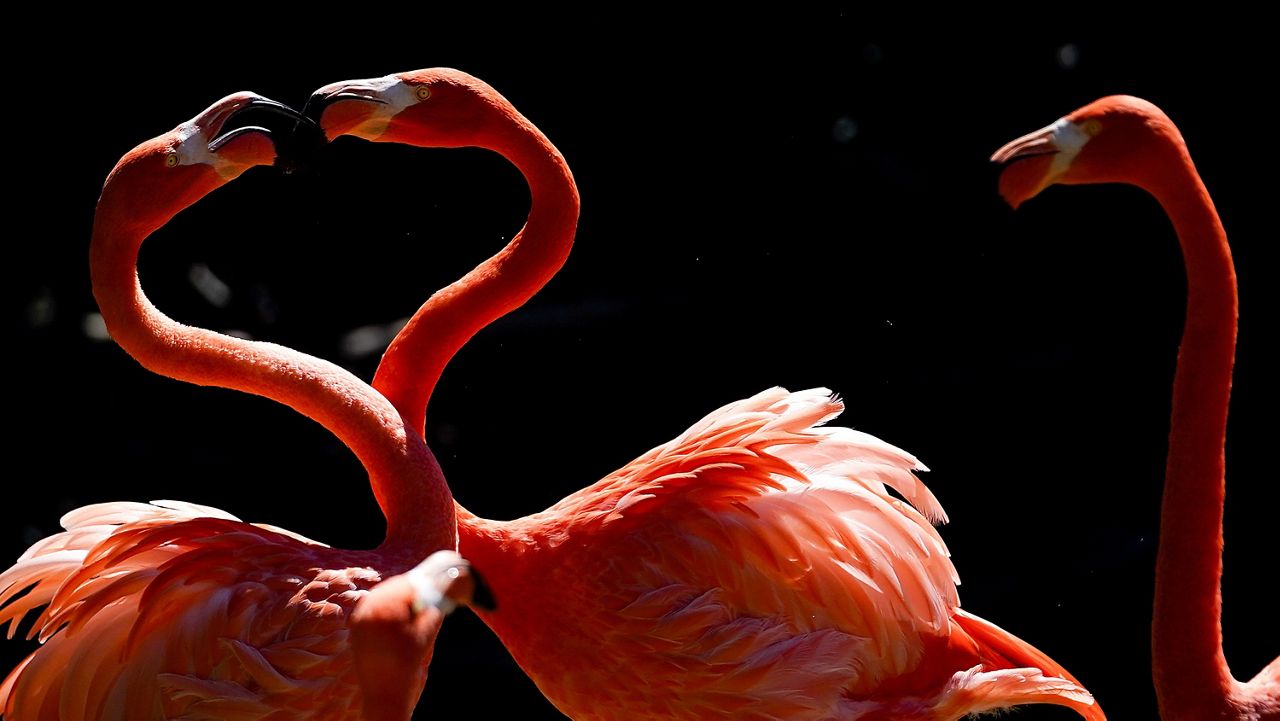Late last month, Hurricane Idalia brought wind, rain and storm surge to the southeastern United States.
What You Need To Know
- Late last month, Hurricane Idalia brought wind, rain and storm surge to the southeastern United States; it also apparently brought flamingos
- In the two weeks since the storm, American Flamingos have been spotted in 10 states, many of which previously had no known sightings in the wild of the tall birds known for their bright pink feathers
- Since the hurricane, flamingos been seen in Alabama, Florida, Kentucky, North Carolina, Ohio, Pennsylvania, South Carolina, Tennessee, Texas and Virginia
- Jerry Lorenz of Audubon Florida believes the birds might have been flying between Cuba and the Yucatan when they got swept up in the storm
It also apparently brought flamingos.
In the two weeks since the storm, American Flamingos have been spotted in 10 states, many of which previously had no known sightings in the wild of the tall birds known for their bright pink feathers, although not all have such a hue.
According to data complied by the American Birding Association (ABA), the vast majority of the sightings have been reported in Florida, the birds’ native land before hunting wiped them out more than a century ago.
While flamingo sightings are not unheard of today in Florida, they overwhelming occur on the state’s southern tip — Hialeah, Biscayne Bay, the Everglades and the Keys.
But since Idalia, there have been many sightings from all over the Sunshine State, Jerry Lorenz, director of research for the conservation group Audubon Florida, said in a video presentation this week.
“We never welcome hurricanes here in Florida,” Lorenz said. “But we did welcome some passengers.”
Flamingos have been spotted far from Florida, too, surprising and delighting bird-watchers. A pair of American Flamingos in Warren County, Ohio — near Cincinnati — set a record for the northernmost point the species had been observed, only to be topped shortly later by a pair in Franklin, County, Pennsylvania — about 160 miles west of Philadelphia along the state’s southern border.
“I am beyond words right now, on my lunch break I decided to check some local ponds for shorebirds, and wouldn't you know I would find the first reported American Flamingos in the state of Pennsylvania,” bird-watcher and photographer John Carter wrote in Facebook post.
“Absolutely stunning birds and I hope many people get a chance to observe them,” he added.
Since the hurricane, flamingos also have been seen in Alabama, Kentucky, North Carolina, South Carolina, Tennessee, Texas and Virginia, according to the ABA.
American Flamingos today largely reside in the Caribbean. Sightings of flocks in Florida and North Carolina each included a single bird that had been tagged in Mexico’s Yucatan Peninsula, where tens of thousands of the birds live year-round.
Lorenz believes the birds might have been flying between Cuba and the Yucatan when they got swept up in the storm.
Idalia entered the Gulf of Mexico by passing between the Yucatan Peninsula and Cuba before slamming into Florida’s Big Bend region as a Category 3 storm.
Nate Swick, digital communications manager for the ABA, told NPR the birds might have flown with the Idalia’s winds or perhaps been in the eye of the storm and moved with it until it broke apart.
Swick added that the flamingos are capable of making their way back home. He predicted they will start heading toward coastal areas.



